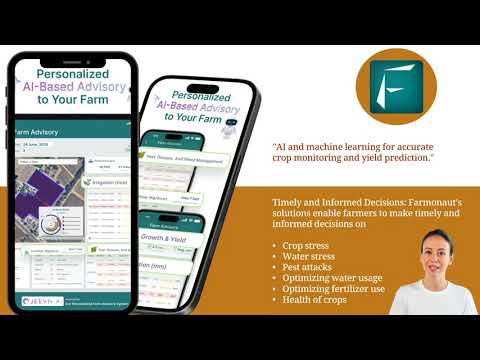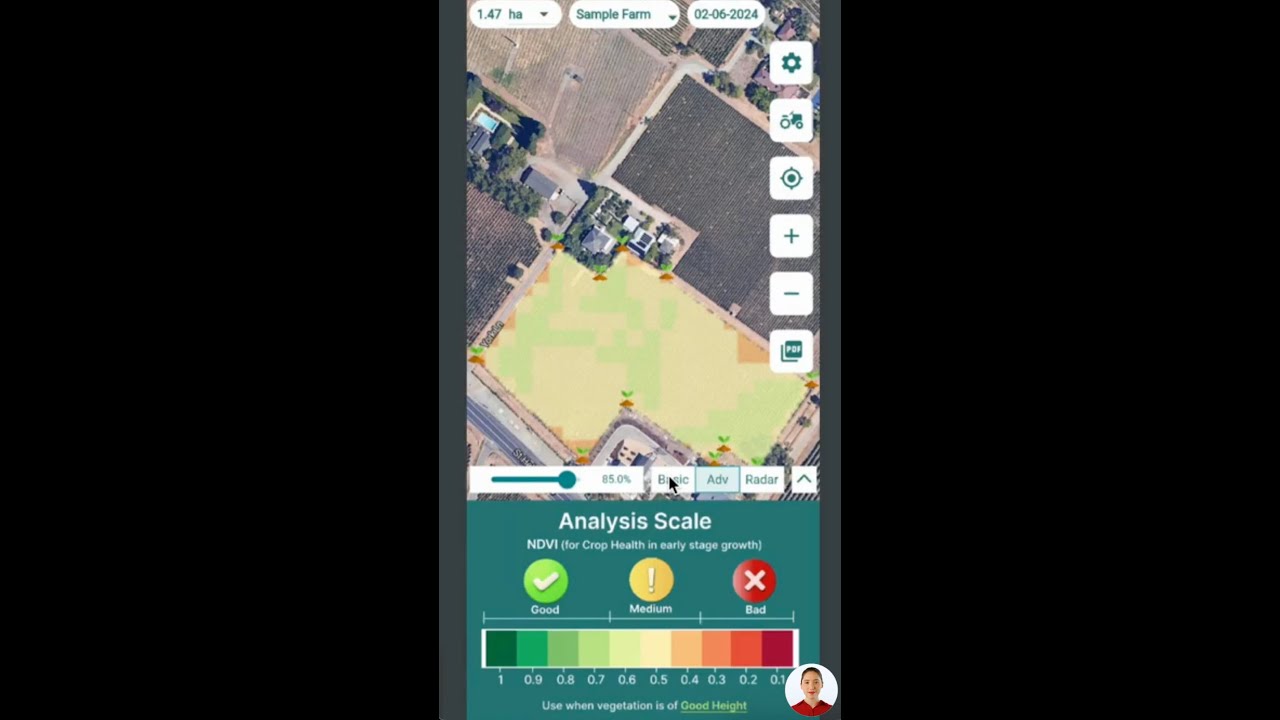Mastering Grain Marketing Strategies: A Prairie Farmer’s Guide to Profitable Crop Pricing and Risk Management

“-Farmers who implement effective grain marketing strategies can potentially increase their profits by 10-15% annually.”
In the ever-evolving world of agriculture, mastering grain marketing strategies has become as crucial as understanding the intricacies of crop production itself. As prairie farmers, we face unique challenges and opportunities in the global grain markets. This comprehensive guide aims to equip you with the knowledge and tools necessary to navigate the complex landscape of crop pricing and risk management effectively.
Just as we’ve embraced drone technology in farming to enhance our operations, it’s time to harness the power of strategic grain marketing to boost our profitability. In this guide, we’ll explore a range of topics, from basic forward pricing to advanced hedging strategies, all designed to help you make informed decisions and maximize your farm’s potential.
Understanding the Importance of Grain Marketing Strategies
Before we dive into specific strategies, let’s consider why developing a robust grain marketing plan is crucial for modern farmers:
- Price Volatility: Grain markets are notoriously volatile, influenced by factors ranging from weather patterns to global economic conditions.
- Risk Management: Effective marketing strategies can help mitigate financial risks associated with price fluctuations.
- Profit Maximization: By understanding market trends and using appropriate tools, farmers can capitalize on favorable pricing opportunities.
- Financial Planning: A well-thought-out marketing plan provides a clearer picture of potential income, aiding in budgeting and investment decisions.
As we progress through this guide, remember that mastering grain marketing is a journey, much like perfecting our farming techniques. It requires patience, continuous learning, and adaptability.
The Foundations of Grain Marketing
To build a solid grain marketing strategy, we must first understand the basic components and factors that influence grain prices:
Supply and Demand Dynamics
The fundamental principle driving grain prices is the balance between supply and demand. Factors affecting this balance include:
- Global Production: Harvest yields in major grain-producing regions like the Midwest, Saskatchewan, and Alberta significantly impact prices.
- Weather Conditions: Droughts, excessive rain, or ideal growing conditions can drastically alter supply predictions.
- International Trade: Policies, tariffs, and trade agreements between countries like India, Russia, and Algeria influence global grain movement.
- Consumer Trends: Shifting dietary preferences and population growth affect demand for various grains.
Market Information Sources
Staying informed is crucial for effective grain marketing. Here are some key sources of market information:
- USDA Reports: Regular updates on crop production, supply and demand estimates, and export sales.
- Commodity Exchanges: Futures and options prices from exchanges like the Chicago Board of Trade (CBOT).
- Industry News: Publications and websites focused on agricultural markets and news.
- Local Elevator Prices: Current cash prices in your area.
Leveraging technology can greatly enhance our ability to access and analyze this information. For instance, Farmonaut’s satellite-based crop monitoring system can provide valuable insights into crop health and potential yields, which can inform our marketing decisions.
Basic Grain Marketing Strategies
Let’s start with some fundamental strategies that form the foundation of effective grain marketing:
1. Cash Sales
The simplest form of grain marketing involves selling your crop for cash at the current market price. While straightforward, this method leaves you vulnerable to market fluctuations. However, it can be effective when:
- Market prices are favorable
- You need immediate cash flow
- Storage costs outweigh potential price increases
2. Forward Contracting
Forward contracting allows you to lock in a price for future delivery of your grain. This strategy offers several benefits:
- Price security: Protects against potential price drops
- Improved cash flow planning: Knowing future income helps with budgeting
- Reduced storage costs: You can plan for immediate post-harvest delivery
However, forward contracting also comes with risks, such as production shortfalls or missing out on potential price increases.
3. Storage and Delayed Pricing
Storing your grain and waiting for better prices can be a viable strategy, especially if you have on-farm storage capabilities. Delayed pricing agreements with elevators can also provide flexibility. Consider this approach when:
- Current prices are low, but market analysis suggests potential increases
- You have adequate storage facilities
- Your cash flow allows for delayed sales
Remember, storage comes with costs and risks, including quality degradation and missed opportunities if prices don’t rise as expected.
Advanced Grain Marketing Strategies
As we become more comfortable with basic strategies, we can explore more sophisticated approaches to grain marketing:
1. Futures and Options in Agriculture
Futures and options contracts are powerful tools for managing price risk and potentially enhancing profitability. Here’s a brief overview:
- Futures Contracts: Agreements to buy or sell a specific amount of grain at a predetermined price on a future date. Farmers often use these to hedge against price declines.
- Options Contracts: These give you the right, but not the obligation, to buy (call option) or sell (put option) a futures contract at a specific price. Options can provide price protection while allowing for potential gains if the market moves favorably.
Using futures and options requires a solid understanding of market mechanics and careful risk management. It’s often advisable to start small and consult with a professional before diving in.
2. Hedging Strategies for Crops
Hedging involves taking offsetting positions in the cash and futures markets to minimize price risk. Common hedging strategies include:
- Short Hedge: Selling futures contracts to protect against potential price declines in your physical crop.
- Long Hedge: Buying futures contracts to protect against potential price increases when you need to purchase grain.
- Rolling Hedge: Moving a hedge forward to a later delivery month to extend price protection.
Effective hedging requires careful timing and a good understanding of basis (the difference between local cash prices and futures prices).
3. Basis Contracts
Basis contracts allow you to lock in the basis while leaving the futures price component open. This strategy can be beneficial when:
- The current basis is strong relative to historical levels
- You expect futures prices to rise
- You want to separate basis risk from futures price risk
Understanding local basis patterns and their relationship to futures prices is crucial for effectively using basis contracts.
“-Over 60% of successful prairie farmers use futures and options as part of their crop pricing risk management.”

Developing a Comprehensive Grain Marketing Plan
Now that we’ve explored various strategies, let’s discuss how to develop a comprehensive grain marketing plan tailored to your farm’s needs:
1. Assess Your Farm’s Financial Situation
- Calculate your break-even prices for each crop
- Understand your cash flow needs throughout the year
- Evaluate your risk tolerance
2. Set Clear Marketing Goals
- Define target prices for each crop
- Establish a desired profit margin
- Determine what percentage of your crop you want to pre-sell
3. Stay Informed About Market Conditions
- Regularly review market reports and analyses
- Monitor global supply and demand trends
- Keep an eye on weather forecasts in key growing regions
4. Implement a Diversified Approach
- Use a combination of marketing tools and strategies
- Spread sales throughout the year to average prices
- Consider crop insurance as part of your risk management strategy
5. Regularly Review and Adjust Your Plan
- Set specific times to review your marketing plan (e.g., monthly or quarterly)
- Be prepared to adjust your strategy based on changing market conditions
- Learn from past decisions and outcomes to refine your approach
Remember, a well-crafted marketing plan is a living document that should evolve with your farm and the market.
Leveraging Technology in Grain Marketing
In today’s digital age, technology plays a crucial role in effective grain marketing. Here’s how we can harness its power:
1. Agricultural Data Analysis
Utilizing data analytics tools can provide valuable insights for marketing decisions. For instance, Farmonaut’s platform offers advanced crop monitoring capabilities that can help in yield prediction and crop health assessment. This information can be invaluable when making marketing decisions, especially for forward contracting or hedging strategies.
Explore Farmonaut’s API for agricultural data analysis
2. Market Information Platforms
Various online platforms and mobile apps provide real-time market data, price charts, and analysis. These tools can help you stay informed and make timely decisions.
3. Precision Agriculture Tools
Drone technology and satellite imagery can provide detailed information about your crops’ condition and potential yield. This data can inform your marketing strategies by giving you a more accurate picture of your expected production.
Global Factors Influencing Grain Markets
As prairie farmers, it’s crucial to understand that our local markets are influenced by global factors. Here are some key international considerations:
1. International Trade Policies
- Trade agreements and disputes between major grain producers and consumers can significantly impact prices.
- Tariffs imposed by countries like India or Russia on grain imports can shift global trade patterns.
2. Global Weather Patterns
- Extreme weather events in major grain-producing regions can cause supply disruptions and price volatility.
- Climate change is increasing the frequency of these events, making weather a critical factor in long-term market analysis.
3. Currency Exchange Rates
- Fluctuations in currency values, particularly the U.S. dollar, can affect grain prices and competitiveness in international markets.
4. Energy Prices
- Oil prices influence production and transportation costs, as well as demand for biofuels, which can impact grain markets.
Staying informed about these global factors can help us anticipate market movements and adjust our marketing strategies accordingly.
Crop-Specific Marketing Considerations
Different crops often require tailored marketing approaches. Let’s look at some specific considerations for key prairie crops:
1. Corn Marketing Strategies
- Monitor ethanol production and livestock feed demand, as these are major drivers of corn prices.
- Consider the impact of competing crops like soybeans on planting decisions and prices.
- Pay attention to export demand, particularly from countries like China.
2. Wheat Marketing Strategies
- Be aware of different wheat classes (e.g., hard red spring, soft red winter) and their specific market dynamics.
- Monitor global wheat production, especially in major exporting countries like Russia and Ukraine.
- Consider protein content when marketing, as it can significantly affect prices.
3. Canola Marketing Strategies
- Keep an eye on vegetable oil markets, as canola competes with other oilseeds like soybeans.
- Monitor biodiesel policies and demand, which can impact canola prices.
- Be aware of export opportunities, particularly to markets like China and the European Union.
4. Pulse Crop Marketing (Peas and Lentils)
- Stay informed about demand from key importing countries like India and China.
- Be aware of trade policies and tariffs that can quickly shift market dynamics.
- Consider the impact of vegetable protein trends on long-term demand.
By understanding the unique factors affecting each crop, we can tailor our marketing strategies to maximize returns across our entire farm operation.
Risk Management Strategies for Farmers
Effective risk management is crucial for long-term success in grain farming. Here are some key strategies to consider:
1. Diversification
- Grow a variety of crops to spread risk across different markets.
- Consider off-farm income sources to provide financial stability.
2. Crop Insurance
- Explore various crop insurance options to protect against yield losses and revenue shortfalls.
- Understand how insurance interacts with your marketing strategies.
3. Financial Management
- Maintain adequate working capital to weather market downturns.
- Use tools like farm management software to track expenses and profitability.
4. Continuous Education
- Stay updated on market trends, new technologies, and marketing tools.
- Attend workshops and seminars to improve your marketing skills.
By implementing a comprehensive risk management strategy, we can protect our farms from market volatility and ensure long-term sustainability.
Grain Marketing Strategy Comparison
| Strategy Name | Risk Level | Potential Profit | Complexity | Best Suited For |
|---|---|---|---|---|
| Forward Contracting | 2 | 3 | Low | Farmers seeking price security and simplified planning |
| Futures Hedging | 4 | 4 | High | Experienced farmers comfortable with market complexity |
| Options Trading | 3 | 5 | High | Farmers looking for flexible price protection |
| Storage and Speculation | 5 | 5 | Medium | Farmers with storage capacity and strong market outlook |
Integrating Technology into Your Grain Marketing Strategy
As we continue to evolve our grain marketing strategies, integrating technology becomes increasingly important. Farmonaut offers several tools that can enhance our decision-making process:
- Satellite-Based Crop Monitoring: Use real-time data on crop health and growth stages to inform your marketing decisions. This can be particularly useful when considering forward contracts or evaluating storage options.
- Yield Prediction: Leverage AI-driven yield predictions to better estimate your production and plan your marketing strategy accordingly.
- Weather Forecasting: Access accurate, field-specific weather forecasts to anticipate potential impacts on crop quality and yield, which can influence your marketing decisions.
By incorporating these technological tools into our grain marketing strategies, we can make more informed decisions based on real-time data and advanced analytics.
Explore Farmonaut’s API Developer Docs for advanced agricultural insights
Conclusion: Embracing the Future of Grain Marketing
As we’ve explored in this guide, mastering grain marketing strategies is a complex but rewarding endeavor. By combining traditional marketing wisdom with modern technology and data-driven insights, prairie farmers can navigate the challenges of today’s agricultural markets with confidence.
Remember, successful grain marketing is not about predicting the future or always hitting the market high. It’s about consistently making informed decisions that align with your farm’s goals and risk tolerance. By developing a comprehensive marketing plan, staying informed about market trends, and leveraging tools like those offered by Farmonaut, we can enhance our profitability and ensure the long-term sustainability of our farming operations.
As we look to the future, let’s embrace the opportunities that come with evolving markets and technologies. By continually educating ourselves and adapting our strategies, we can thrive in the dynamic world of grain marketing.
FAQ Section
Q: How often should I review my grain marketing strategy?
A: It’s advisable to review your strategy at least monthly, with more frequent checks during critical periods like planting and harvest. Regular reviews allow you to adjust to changing market conditions and farm needs.
Q: Is it better to focus on one marketing strategy or use multiple approaches?
A: Generally, a diversified approach using multiple strategies can help spread risk and capture various market opportunities. However, the best mix depends on your individual farm situation and risk tolerance.
Q: How can I stay updated on market trends and pricing information?
A: Utilize a combination of resources, including USDA reports, agricultural news websites, local elevator updates, and technology platforms like Farmonaut for real-time crop and market data.
Q: What role does crop insurance play in grain marketing?
A: Crop insurance is an important risk management tool that can complement your marketing strategy. It provides a safety net that may allow you to be more aggressive in your marketing decisions.
Q: How can I determine the right time to sell my grain?
A: There’s no perfect time to sell, but you can make informed decisions by considering factors like your production costs, current market prices, storage costs, and future price projections. Selling incrementally throughout the year can also help average out price fluctuations.




















